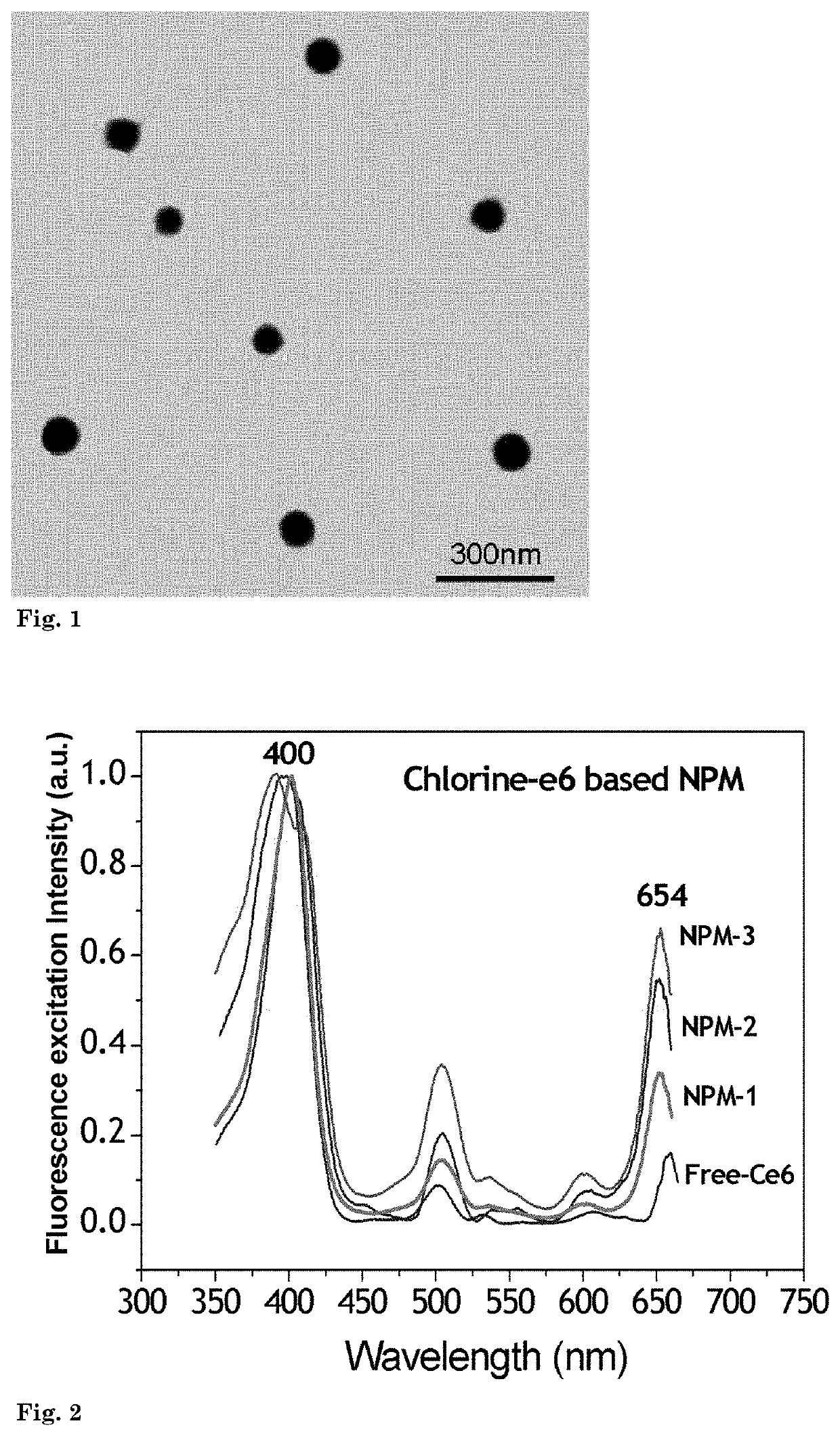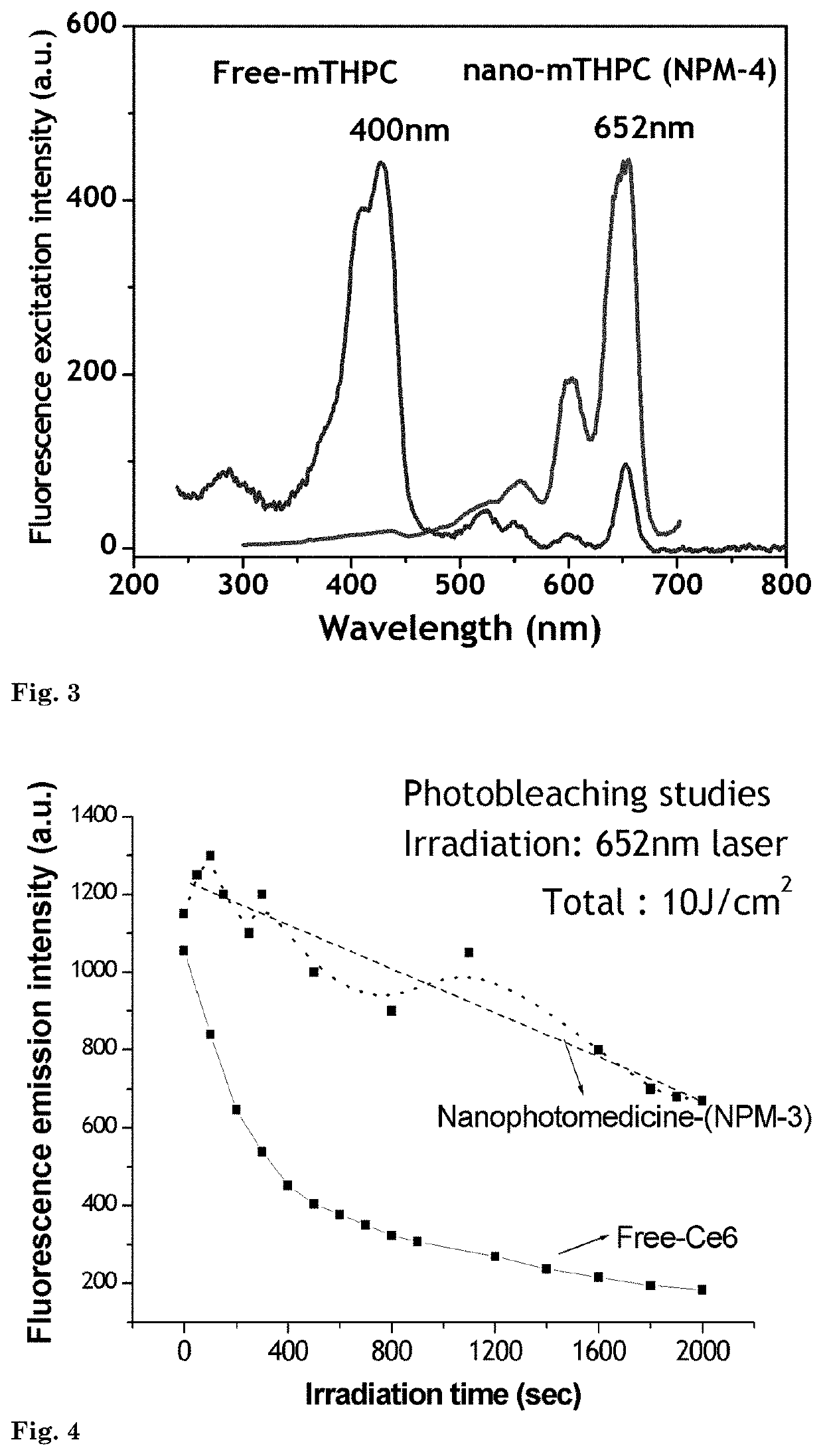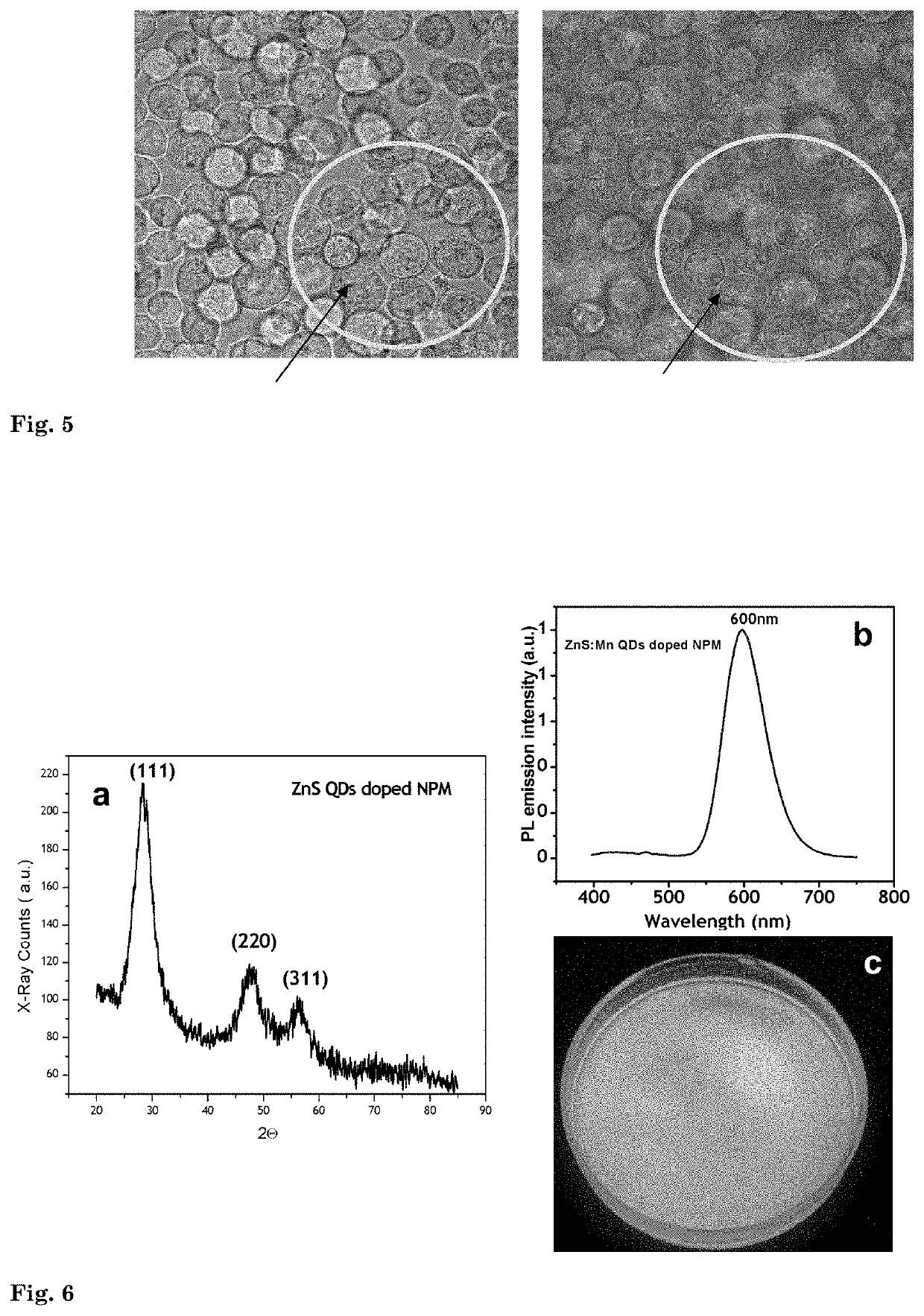Targeted nano-photomedicines for photodynamic therapy of cancer
a cancer and cancer technology, applied in the direction of drug compositions, pharmaceutical delivery mechanisms, emulsion delivery, etc., can solve the problems of tumor cell irreversible damage, difficulty in administration, and low general clinical acceptance as a mainstream cancer therapy tool, so as to improve the efficacy of phototherapy, improve the photoabsorption effect of photodrug, and improve the effect of phototherapy
- Summary
- Abstract
- Description
- Claims
- Application Information
AI Technical Summary
Benefits of technology
Problems solved by technology
Method used
Image
Examples
example 4
n of Nanophotomedicine NPM-4 Using mTHPC as Photosensitizer
[0103]In this example, the production of nanophotomedicine (NPM-4) with another important photosensitizer mTHPC is illustrated. The product shows a 100% shift of light absorbance properties from the Sorent to Q band at 652 nm while maintaining its high fluorescence and photosensitizer activity.
[0104]A 1 μM concentration of amine-reactive mTHPC was treated with 600 μL silane coupling agent APTS for 24 hrs in the dark. After 24 hrs, the mTHPC-APTS conjugate was reacted with 1000 μL of TEOS or TMOS for 6 hrs in 10 ml of 99% ethanolic medium, forming the precursor for silane-coupled quasi-aggregated nanophotomedicine, mTHPC. Hydrolysis of this precursor by the addition of 6 ml of water and 800 μL NaOH under sonication for 20 minutes with an interval of 2 minutes leads to the precipitation of NPM-4 nanoparticles complexed with quasi-aggregated mTHPC.
[0105]This product shows completely different absorption / excitation characteristi...
example 5
hotophysical Properties of Nanophotomedicine NPM-3
[0106]In this example, the photophysical properties of the nanophotomedicine prepared in Example 3 (NPM-3) is illustrated. Significant improvements of the product in comparison to the free drug in photodynamic therapy are demonstrated.
[0107]Photostability of the drug is very important for extended therapy of disease like cancer. However, photodrugs, particularly water soluble drugs like Ce6 undergo very fast photodegradation as it is subject to degradation by singlet oxygen produced by the drug itself. This leads to premature completion of the treatment due to an insufficient concentration of the drug at the disease site. In this example it is shown how nanophotomedicine overcomes this problem.
[0108]Photobleaching characteristics of free Ce6 and nanophotomedicine (NPM-3) having nearly the same initial florescence intensity (that correlate with concentration of the drug) is compared using a fluorescence spectrometer. Laser irradiation...
example 6
In Vivo Photophysical Properties of Nanophotomedicine NPM-3
[0109]In this example, the photostability of nanophotomedicine intracellularly within of cancer cells was tested and compared to that of free photosensitizer.
[0110]Leukemia cells K562 were seeded at 800.000 cells / well in a 12 well tissue culture plate and treated with both free Ce6 (1 μM) and nanophotomedicine (NPM-3) prepared by using the same concentration of the sensitizer. Cells were incubated at 37° C. for 3 hrs before imaging using confocal microscope. Fluorescence imaging was carried out by exciting the sensitizer or nanophotomedicine taken-up by the cells using 405 nm laser. For recording the photobleaching at intracellular regions of the cancer cells, which has significant correlation to therapeutic effects, imaging is carried out after stipulated duration of laser irradiation from 1-360 seconds).
[0111]FIG. 5a shows confocal images of cells treated with free-Ce6 wherein the drug was found completely bleached out in ...
PUM
| Property | Measurement | Unit |
|---|---|---|
| size | aaaaa | aaaaa |
| size | aaaaa | aaaaa |
| size | aaaaa | aaaaa |
Abstract
Description
Claims
Application Information
 Login to View More
Login to View More - R&D
- Intellectual Property
- Life Sciences
- Materials
- Tech Scout
- Unparalleled Data Quality
- Higher Quality Content
- 60% Fewer Hallucinations
Browse by: Latest US Patents, China's latest patents, Technical Efficacy Thesaurus, Application Domain, Technology Topic, Popular Technical Reports.
© 2025 PatSnap. All rights reserved.Legal|Privacy policy|Modern Slavery Act Transparency Statement|Sitemap|About US| Contact US: help@patsnap.com



